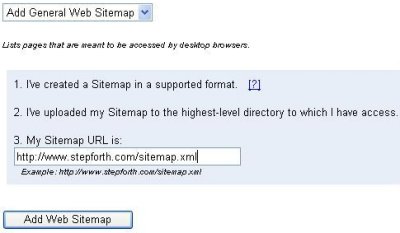The Three Principles of HTML Code Optimization
Just like spring cleaning a house, the html code of your web pages should get periodic cleaning as well. Over time, as changes and updates are made to a web page, the code can become littered with unnecessary clutter, slowing down page load times and hurting the efficiency of your web page. Cluttered html can also seriously impact your search engine ranking.
This is especially true if you are using a WYSIWYG (What You See Is What You Get) web design package such as FrontPage or Dreamweaver. These programs will speed up your web site creation, but they are not that efficient at writing clean html code.
We will be focusing this discussion on the actual html coding, ignoring other programming languages that may be used in a page such as JavaScript. In the code examples I will be using round brackets ( ) instead of correct html angle brackets < > so that the code examples will display properly in this newsletter.
Up until recently when coding a page in HTML we would be using tags such as the (font) tag and (p) paragraph tags. Between these tags would be our page content, text, images and links. Each time a formatting change was made on the page new tags were needed with complete formatting for the new section. More recently we have gained the ability to use Cascading Style Sheets, allowing us to write the formatting once and then refer to that formatting several times within a web page.
In order to speed up page load times we need to have fewer characters on the page when viewed in an html editor. Since we really do not want to remove any of our visible content we need to look to the html code. By cleaning up this code we can remove characters, thereby creating a smaller web page that will load more quickly.
Over time HTML has changed and we now have many different ways to do the same thing. An example would be the code used to show a bold type face. In HTML we have two main choices, the (strong) tag and the (b) tag. As you can see the (strong) tag uses 5 more characters than the (b) tag, and if we consider the closing tags as well we see that using the (strong)(/strong) tag pair uses 10 more characters than the cleaner (b)(/b) tag pair.
This is our First Principle of clean HTML code: Use the simplest coding method available.
HTML has the ability of nesting code within other code. For instance we could have a line with three words where the middle word was in bold. This could be accomplished by changing the formatting completely each time the visible formatting changes. Consider this code:
(font face="times")This(/font)
(font face="times")(strong)BOLD(/strong)(/font)
(font face="times")Word(/font) This takes up 90 characters.
This is very poorly written html and is what you occasionally will get when using a WYSIWYG editor. Since the (font) tags are repeating the same information we can simply nest the (strong) tags inside the (font) tags, and better yet use the (b) tag instead of the (strong) tag. This would give us this code (font face="times)This (b)BOLD(/b) Word(/font), taking up only 46 characters.
This is our Second Principle of clean HTML code: Use nested tags when possible. Be aware that WYSIWYG editors will frequently update formatting by adding layer after layer of nested code. So while you are cleaning up the code look for redundant nested code placed there by your WYSIWYG editing program.
A big problem with using HTML tags is that we need to repeat the tag coding whenever we change the formatting. The advent of CSS allows us a great advantage in clean coding by allowing us to layout the formatting once in a document, then simply refer to it over and over again.
If we had six paragraphs in a page that switch between two different types of formatting, such as headings in Blue, Bold, Ariel, size 4 and paragraph text in Black, Times, size 2, using tags we would need to list that complete formatting each time we make a change.
(font face="Ariel" color="blue" size="4")(b)Our heading(/b)(/font)
(font face="Times color="black" size="2")Our paragraph(/font)
(font face="Ariel" color="blue" size="4")(b)Our next heading(/b)(/font)
(font face="Times color="black" size="2")Our next paragraph(/font)
We would then repeat this for each heading and paragraph, lots of html code.
With CSS we could create CSS Styles for each formatting type, list the Styles once in the Header of the page, and then simply refer to the Style each time we make a change.
(head)
(style type="text/css")
(!--
.style1 {
font-family: Arial, Helvetica, sans-serif;
font-weight: bold;
font-size: 24px;
}
.style2 {
font-family: "Times New Roman", Times, serif;
font-size: 12px;
}
--)
(/style)
(/head)
(body)
(p class="style1")Heading(/p)
(p class="style2")Paragraph Text(/p)
(/body)
Notice that the Styles are created in the Head section of the page and then simply referenced in the Body section. As we add more formatting we would simply continue to refer to the previously created Styles.







 Social bookmark this
Social bookmark this